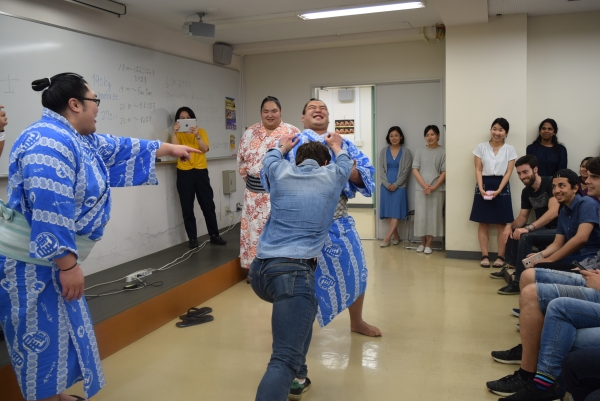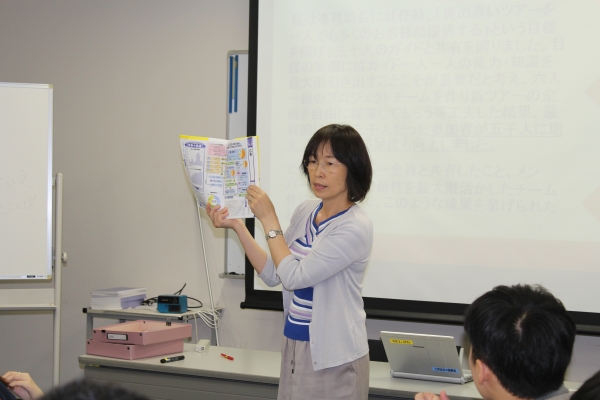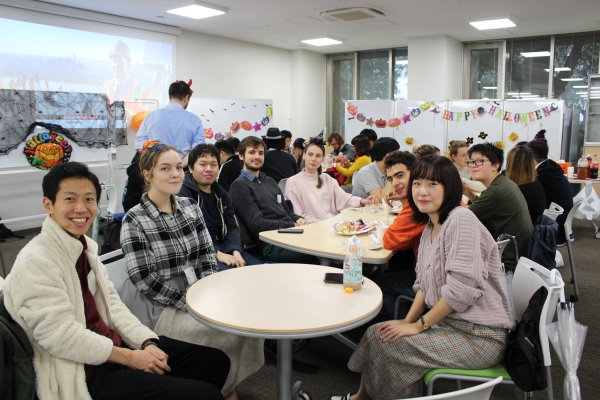Japanese Language Classes at the School of Engineering (JLCse)
The Japanese Language Classes at the School of Engineering (JLCse) offer a variety of support programs for international students, researchers, and their spouses. These programs include Japanese language and culture courses. We offer 31 courses at 6 levels, from beginning to advanced level. Currently, approximately 700 to 800 students from more than 50 countries are studying at the JLCse. For credit courses, 2 credits are given per course. Specialized courses for engineering, such as “technical reading” and “technical terms and kanji” are offered in addition to an employment support course. There are opportunities to practice Japanese and interact with Japanese students within Japanese courses. In addition to courses, students are provided with opportunities to experience Japanese culture through events such as traditional tea ceremony, Japanese flower arrangement, and kimono wearing and so on. We also host the International Lounge to promote exchanges between international students and Japanese students. Both international and Japanese students at The University of Tokyo talk in different languages and make new friends in a relaxing and open atmosphere.
Global Leadership Initiative for an Age-Friendly Society (GLAFS)
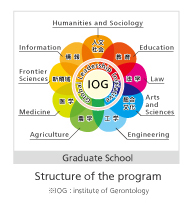
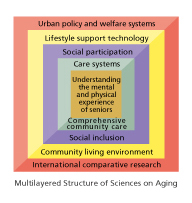
As of 2013, nine Programs for Leading Graduate Schools have been implemented at the University of Tokyo. Students from any department at the School of Engineering may enroll in these programs, which cover all 18 departments at the School.
One of these Programs, GLAFS (Global Leadership Initiative for an Age-Friendly Society), is a collaborative program by the Institute of Gerontology (IOG) and nine Graduate Schools (29 departments) at the University of Tokyo with the aim of fostering global leaders to envision and create an Age-Friendly Society.
GLAFS aims to nurture students who can not only perform specialized academic research in their field of specialization but also gain a comprehensive understanding of the various issues relating to rapidly aging societies. The program also supports development of practical problem-solving skills by leading a team of professionals from various fields. Accordingly, professionals from collaborating companies and local governments are invited to serve as “fieldwork training” instructors. In “global training,” GLAFS collaborates with world-leading educational centers such as the University of Michigan and the University of Oxford.
Japan, as a rapidly aging society, needs a comprehensive redesign of the core elements of its living environment, and this field is one in which GLAFS students play a key role. Students from the following seven departments may enroll in our program: the Department of Civil Engineering, the Department of Architecture, the Department of Urban Engineering, the Department of Mechanical Engineering, the Department of Precision Engineering, the Department of Chemical System Engineering, and Advanced Interdisciplinary Studies.
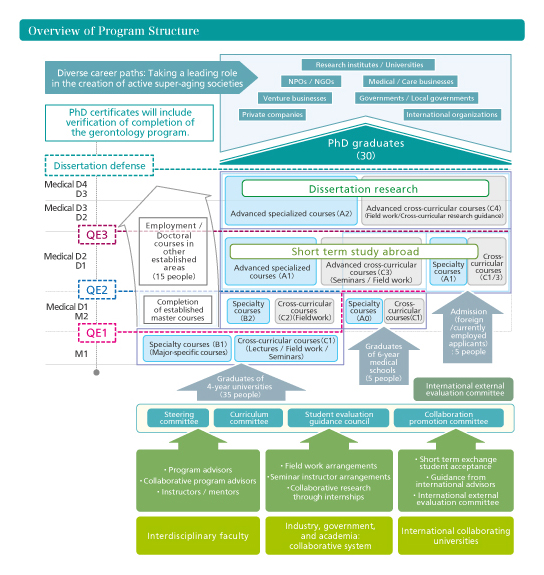
Creating material network flows to produce socially-conscious designs by Professor Yusuke Obuchi
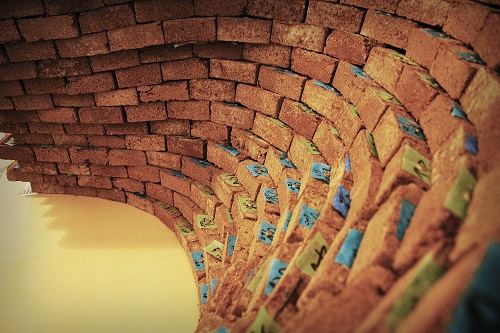 Cow Dung Bricks: Rather than being recycled in the city, cardboard was used as a partial replacement for cow feed, and the resulting fortified dung wasused for construction of a temporary city pavilion.
Cow Dung Bricks: Rather than being recycled in the city, cardboard was used as a partial replacement for cow feed, and the resulting fortified dung wasused for construction of a temporary city pavilion.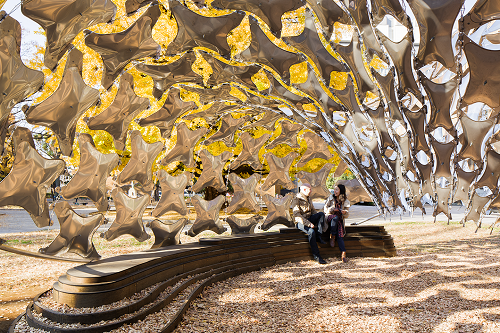 Tensegrity Pavilion: A tensegrity structure which reached structural stability upon being lifted into place by a crane. The project aimed to explore structures which could be transported and built efficiently, while also possessing design qualities.
Tensegrity Pavilion: A tensegrity structure which reached structural stability upon being lifted into place by a crane. The project aimed to explore structures which could be transported and built efficiently, while also possessing design qualities.
Our laboratory links architecture, engineering and computation to examine methods for maximizing the potential of material and design excellence. Students use computation as a way to advance design, and explore how to make designs more effective (economically and systematically). With sustainability as a vehicle for investigation, students work to create outputs with formal qualities, but which also exhibit a social consciousness. A 1:1 scale architectural project provides students with an opportunity to experience the production process of a prototype pavilion. As a part of the University of Tokyo's School of Engineering, students have the opportunity to collaborate with engineers and experts beyond the architectural discipline.
Obuchi Laboratory asks how cities can act as a basis for experimentation, and considers how materials can act as links between different resources. Through such explorations, we aim to create networks which can be sustained within their own environments. Students are able to pursue this research due to the unique context of Japan.
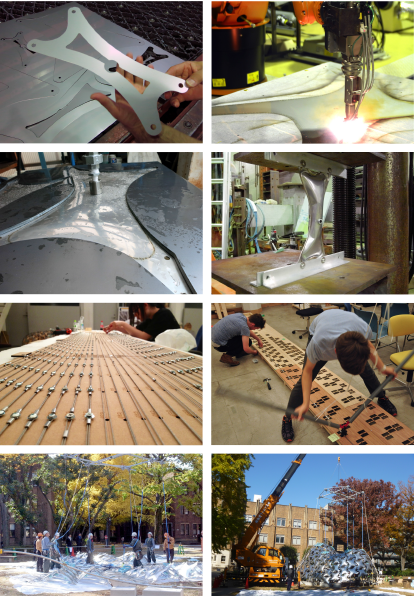
Education for Data-driven Creativity: Developed to support students' creative talents in pursuit of knowledge and intelligence-integrating technologies
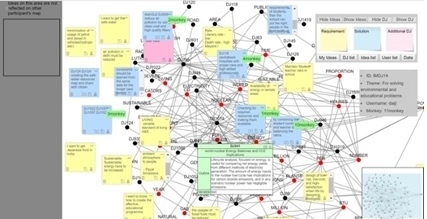 Launched in 2018, IMDJ Web Version is an online application that integrates Data Jacket Store and an Interactive Visualization Interface. Students from a distance can access and interact in real time.
Launched in 2018, IMDJ Web Version is an online application that integrates Data Jacket Store and an Interactive Visualization Interface. Students from a distance can access and interact in real time.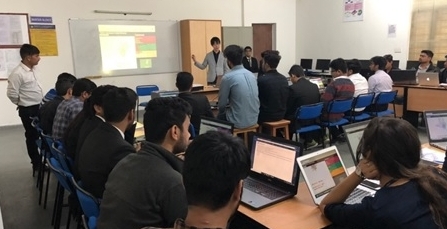 IM and IMDJ are used in classes (including abroad summer programs) and in government projects for Data Driven Innovation. They are also used at the Data Exchange Consortium, led by private sectors in Japan.
IM and IMDJ are used in classes (including abroad summer programs) and in government projects for Data Driven Innovation. They are also used at the Data Exchange Consortium, led by private sectors in Japan.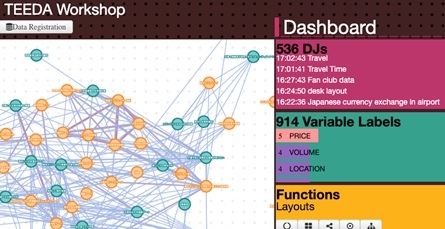 Taking advantage of AI techniques, supportive tools enhance students' cognitive process. Algorithms work on large amounts of data to extract the most relevant information in the problem solving process.
Taking advantage of AI techniques, supportive tools enhance students' cognitive process. Algorithms work on large amounts of data to extract the most relevant information in the problem solving process.
Innovators Marketplace ®, a product of the integration of data science and cognitive engineering, is a gamified workshop method which aims to activate participants' creativity. In this method, pieces of knowledge are combined via computational visualization of their relationships so that people who attend the workshop and look at the graph can propose and/or evaluate ideas which combine and use/reuse the knowledge. The IM method has been extended to a process called the Innovators Marketplace on Data Jackets (IMDJ). This process integrates multidisciplinary datasets to realize cross-domain innovation driven by combinations and reuse of data. Businesses and sciences relevant to manufacturing, the service industry, healthcare, etc. have recently introduced IMDJ as a scientific approach for data management. The University of Tokyo is developing new technologies to foster true data scientists who will aid in the dissemination of data in the future. Students aim to solve problems of the world in the Big Data era. Technologies are developed to support their creative talents in the process of innovation. Taking advantage of AI techniques, tools are developed to support students' cognitive process, idea activation and learning process. Algorithms work on large amounts of data to extract the most relevant information in problem solving process.



